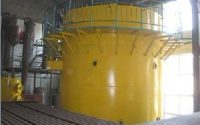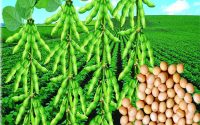Edible oil test
1.Overview
(1) The main safety issues of edible oils and fats
Edible oils and fats can be divided into vegetable oils and animal fats according to their sources. Vegetable oils such as peanut oil, soybean oil, rapeseed oil, cottonseed oil, sesame oil, sunflower oil, corn germ oil, rice bran oil, coconut oil and the like. Animal fats such as lard, butter, butter, and sheep oil. Edible oils and fats are mainly triglycerides and contain a mixture of other components. Edible oils and fats often cause a series of safety problems due to impure raw materials, unreasonable production processes, and improper storage and transportation.
1.Rancidity and high-temperature deteriorating oils are a series of chemical changes and sensory traits due to impurities or long-term storage under unsuitable conditions. The process of rancidity of oil is mainly hydrolysis and oxidation. After hydrolysis, it is decomposed into glycerol, mono- or diglyceride and corresponding fatty acids. Oxidation generally occurs mostly in unsaturated fatty acids, especially polyunsaturated fatty acids. Unsaturated fatty acids open under the action of ultraviolet light and oxygen to form peroxides, and then continue to decompose into low molecular weight fatty acids, aldehydes, ketones, alcohols and the like. A series of complex chemical reactions such as oxidation, decomposition, and polymerization occur under high temperature frying conditions, resulting in various decomposition products and polymers, which deteriorate the quality of the oil.
The products of rancidity and high temperature deterioration are very complicated, and some of them can be used as indicators for evaluating rancidity and high temperature deterioration of oils.
(1) Peroxide value (POV): The peroxide content of unsaturated fatty acids in oils and fats is called peroxide value, which is generally expressed as the number of grams of iodine precipitated by potassium iodide. POV is an early indicator of rancidity of oil. In the early stage of oil decomposition, when rancidity is not obvious, POV rises. However, when the oil is severely rancid and deteriorated, the peroxide value decreases, because its decomposition is greater than that.
(2) Acid value (AV): The acid value refers to the number of milligrams of potassium hydroxide required to neutralize free fatty acids in 1 g of fat. When the oil is rancid, the free fatty acid increases, and the acid value also increases. Therefore, the acid value is an important indicator to measure the degree of rancidity of the oil.
(3) Polar compound (PC): A general term for some components whose polarity is worse than that of normal oil molecules (triglycerides) under the conditions of food frying. It includes a thermal oxidation product of a triglyceride, a thermal polymerization product, a thermal oxidation polymerization product, a hydrolysis product, and the like. The content of polar components is a key indicator of whether frying oil is overused and harmful.
2. Oil pollution and naturally occurring harmful substances Oilseeds are contaminated with mold and its toxins, and their toxins may be transferred to oils and fats, the most common being aflatoxins; oils may be affected by polycyclic aromatic hydrocarbons and arsenic during production and use. Pollution of harmful substances such as mercury; some oil crops naturally have some substances that have a toxic effect on human health. Some of them may be transferred to oils and fats in the process of making fats, such as mustard contained in rapeseed. Glycosides, gossypol and the like contained in cottonseed.
Edible oil safety standard
China has formulated the “Sanitary Standard for Edible Vegetable Oils” (GB 2716), “Sanitary Standards for Edible Vegetable Oils in the Process of Frying” (GB 7102.1) and other national standards. The physical and chemical indicators for edible vegetable oils are shown in Table 11-2. According to GB 27602763, edible oils and fats also need to be tested for antioxidants, aflatoxin B1, lead, total arsenic, nickel (hydrogenated vegetable oils and hydrogenated vegetable oils), benzo[a]pyrene, organophosphorus, organochlorine, pyrethrum Ester pesticides and other projects. This section will focus on the determination of peroxide values, acid values, polar components and free gossypol.
2.The determination of peroxide value
The methods for measuring the peroxide value mainly include titration method, spectrophotometry, and rapid measurement card. The first two methods are the methods specified in the national standard “Analytical Methods for Edible Vegetable Oil Hygiene Standards” (GB/T 5009.37). Quick test cards are often used for quick screening on site.
(1)Titration
1.Principle In the presence of glacial acetic acid, the peroxide in the oil reacts with potassium iodide to form free iodine, titrated with sodium thiosulfate standard solution, and the peroxide value of the oil is calculated according to the amount of sodium thiosulfate consumed. The chemical reaction formula is:
2.Analytical procedure Weigh a certain amount of sample in an iodine measuring flask, add a chloroform-acetic acid mixture to dissolve the sample; add saturated potassium iodide solution, and set it in the dark; remove the water, shake it, and immediately titrate with sodium thiosulfate standard solution. When it is light yellow, add the starch indicator solution, continue to titrate until the blue color disappears to the end point, and do the reagent blank test according to the same method. The peroxide value (g/100g) in the sample was calculated based on the volume and concentration of sodium thiosulfate consumed. The 1.000 mol/L sodium thiosulfate standard solution 1.00 m1 corresponds to a mass of 0.1269 g of iodine.
3.Method description
(1) Free iodine and iodate should not be present in the saturated potassium iodide solution. When the blank test is carried out, if the blue solution is added, it should be considered whether the reagent meets the requirements.
(2)The ratio of chloroform to acetic acid, the length of time after the addition of potassium iodide, and the amount of water added have an effect on the measurement results. Chloroform must not contain oxides such as phosgene or it should be treated.
(3) In order to prevent oxidation of iodine by O2 in the air, light irradiation should be avoided. Immediately after I2 is completely precipitated, it is titrated with a sodium thiosulfate standard solution. Do not shake the solution vigorously during the titration to avoid iodine volatilization.
(2) Spectrophotometry
1.The principle sample is dissolved in a chloroform-methanol mixed solvent. The peroxide in the sample oxidizes the ferrous ion to a ferric ion, and the ferric ion reacts with the thiocyanate to form an orange-red iron thiocyanate complex. Quantitative compared to the standard series. The chemical reaction formula is:
2.Analytical procedure Weigh a certain amount of sample and dissolve it with a mixed solvent of chloroform-methanol (7+3). The ferrous chloride solution was added to the appropriate amount of the sample solution, and the trivalent iron standard series was taken, and the volume was diluted with a chloroform-methanol mixed solvent. Add potassium thiocyanate solution and mix. The absorbance value was measured at a wavelength of 500 nm, a standard curve was drawn, and the peroxide value was calculated.



